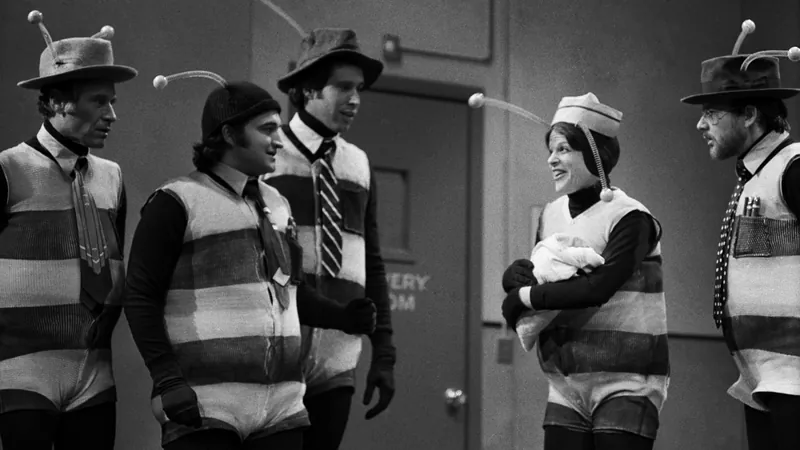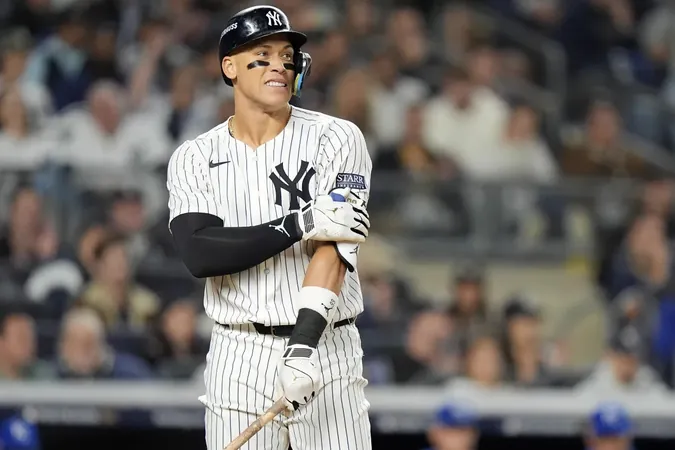
From Chaos to Comedy: The Wild Origins of 'Saturday Night Live'
2024-10-11
Author: Jessica Wong
Introduction
When “Saturday Night Live” premiered on October 11, 1975, it wasn't quite the institution we know today; it was a whirlwind of creativity, rebellion, and sheer unpredictability. At the time, Lorne Michaels’ late-night show had to shed its original title due to a competing program on ABC, debuting simply as “Saturday Night.” The inaugural season was a testing ground, with Michaels, Chevy Chase, and the other cast members still seeking their footing within the evolving world of television comedy.
The Show's Unique Beginnings
The first episode of “SNL” was a medley of distinct performances, including four monologues by comedian George Carlin, a unique comic performance from Andy Kaufman, and a short film by Albert Brooks. Intriguingly, the show also featured a bizarre segment with adult-oriented Muppets from “The Land of Gorch,” which would ultimately be phased out as the show matured. Chase’s portrayal in the recurring “Weekend Update” segment began to lay the groundwork for what would become a beloved staple, but it wasn’t until the fourth episode, with host Candice Bergen, that viewers began to see a clearer vision of what “SNL” would evolve into.
A Spirit of Anarchy and Irreverence
The spirit that defined the first season was one of riveted anarchism and irreverence, challenging not just the political landscape but the very fabric of comedy and entertainment. For instance, in the inaugural show’s opening sketch, writer Michael O'Donoghue teaches an English as a Second Language class to a heavily-accented John Belushi, highlighted by absurd phrases like, “I would like to feed your fingertips to the wolverines.” This oddball approach underscored a crucial philosophy of the show: embracing eccentricity over conformity.
Iconic Characters Born from Chaos
Michaels’ willingness to embrace the unconventional led to the formation of memorable and iconic characters, such as the Killer Bees, brought to life amidst the backstage chaos when an NBC executive attempted to discourage their appearances. Belushi’s unforgettable audition, which included a surprising impression of Toshiro Mifune, put him on the map, and his outrageous roles, like a samurai in everyday scenarios, added to the surreal tapestry of the show.
Political Satire Redefined
Chase's outrageous impersonation of President Gerald Ford deviated from traditional political satire, relying on physical comedy rather than typical mimicry. His depiction, which subverted expectations, became a significant commentary on Ford's public image at the time. So impactful was Chase's portrayal that it prompted a visit from White House press secretary Ron Nessen, who appeared on the show amid a cacophony of bizarre sketches and mock commercials, displaying “SNL’s” audacious disregard for political decorum.
Groundbreaking Moments in Comedy
Among the most audacious moments of that first season was a groundbreaking sketch featuring Chase interviewing Richard Pryor, wherein a game of word association spiraled into the realm of racial epithets. This bold decision to feature a comedy legend like Pryor underscored Michaels' commitment to making “SNL” a platform for cutting-edge comedy.
Legacy of 'Saturday Night Live'
As “Saturday Night Live” turns 50, it’s clear that those early days paved the way for its success. Despite the professional refinement that came in later seasons, the electricity of its chaotic origins remains essential to its legacy. The risky experimentation and bold humor of the ‘70s helped shape the show into the cultural juggernaut it is now. If you thought comedy was just laughs, think again—“SNL” became a revolution that transformed American entertainment forever. Join the celebration of its wild and wonderful history as we remember how it all began!


 Brasil (PT)
Brasil (PT)
 Canada (EN)
Canada (EN)
 Chile (ES)
Chile (ES)
 España (ES)
España (ES)
 France (FR)
France (FR)
 Hong Kong (EN)
Hong Kong (EN)
 Italia (IT)
Italia (IT)
 日本 (JA)
日本 (JA)
 Magyarország (HU)
Magyarország (HU)
 Norge (NO)
Norge (NO)
 Polska (PL)
Polska (PL)
 Schweiz (DE)
Schweiz (DE)
 Singapore (EN)
Singapore (EN)
 Sverige (SV)
Sverige (SV)
 Suomi (FI)
Suomi (FI)
 Türkiye (TR)
Türkiye (TR)